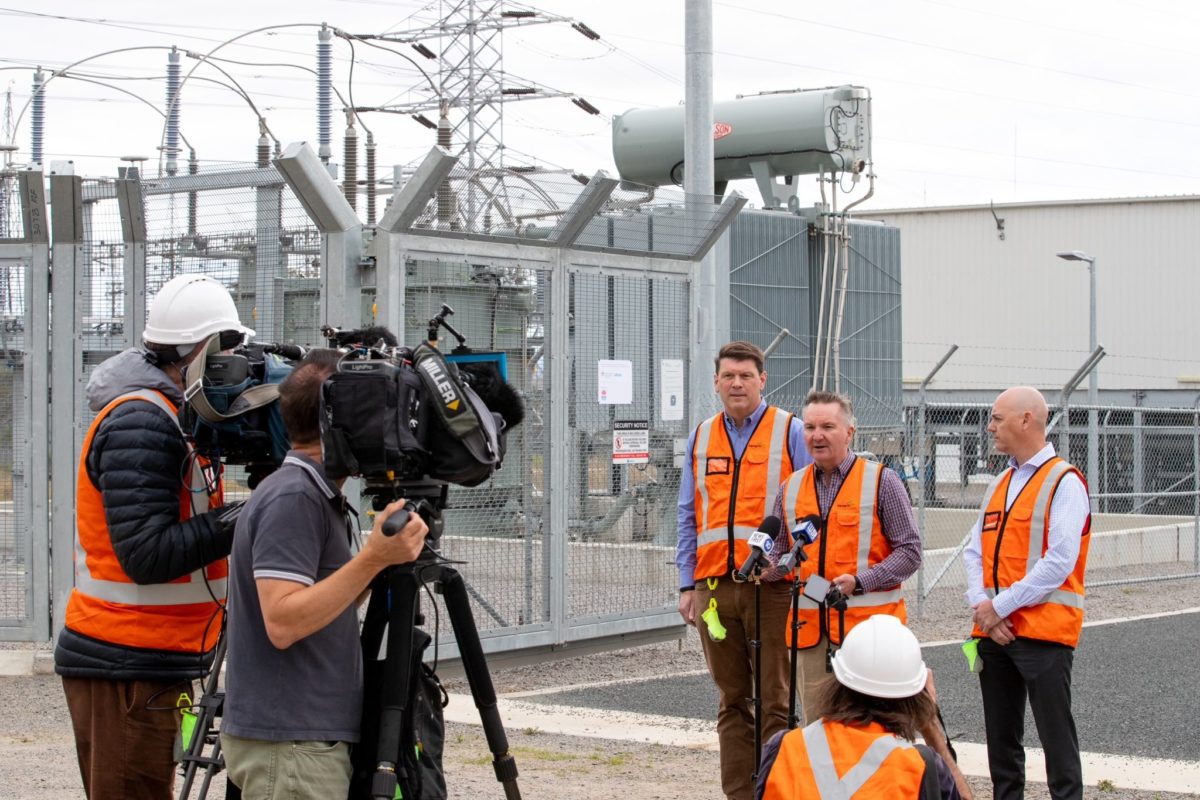The Australian government has signed off on a $117.5 million investment to deliver eight large-scale batteries with a combined 2 GW/4.2 GWh of storage capacity. The investment will help to stabilize and balance the nation's major grid, the National Electricity Market (NEM), as Australia transitions from coal-fired power to renewables.
Funded through the government-owned Australian Renewable Energy Agency’s (ARENA) Large Scale Battery Storage Funding Round, each battery will be equipped with grid-forming inverter technology, allowing them to provide essential system stability services traditionally provided by synchronous generation such as coal and gas.
System strength services and inertia have historically been provided by baseload coal and gas power plants, but ARENA Chief Executive Officer Darren Miller said grid-forming technologies could provide the necessary substitute as the penetration of variable, renewable energy increases.
“It's the ability of this advanced inverter technology to support the grid without coal or gas that's fundamental to the innovation here today,” he said. “We know we need the energy, but we also need those crucial system security services, frequency support voltage and the like that these new batteries can provide.”
The funding will see seven new batteries developed across the states of New South Wales, Queensland, Victoria and South Australia. The batteries range from 200 to 300 MW each and will provide virtual inertia and system strength services to the grid.
The funding also provides for a major upgrade of the 300 MW/450 MWh Victorian Big Battery near Geelong. Owned by French renewable energy developer Neoen, the storage facility will be retrofitted to enable grid-forming capability.

All of the projects are expected to reach financial close in 2023 and be operational by 2025.
ARENA said with a total project value of about $1.8 billion and a combined capacity of 2.0 GW/4.2 GWh the projects represent a ten-fold increase in grid-forming electricity storage capacity currently operational in the NEM.
Miller said the batteries represent a transformative portfolio of new storage capacity and will help underpin the transition to renewable energy in Australia. And added that the need to smooth out variable generation and store electricity is essential for Australia's transition to renewables.
“These next-generation grid-scale batteries will underpin this transition, with inverter technology that can maintain grid stability without the need for coal and gas generators. This pipeline of grid-forming projects will help move us closer to an electricity grid that can support 100% renewable energy in the NEM,” said Miller.
The developers and projects ARENA has selected for support are:
- AGL: new 250 MW/500 MWh battery in Liddell, NSW.
- FRV: new 250 MW/550 MWh battery in Gnarwarre, VIC.
- Origin: new 300 MW/900 MWh battery in Mortlake, VIC
- Risen: new 200 MW/400 MWh battery in Bungama, SA.
- TagEnergy: new 300 MW/600 MWh battery in Mount Fox QLD.
- Neoen: new 200 MW/400 MWh battery in Hopeland, QLD.
- Neoen: new 200 MW/400 MWh battery in Blyth, SA.
- Neoen: retrofitting the 300 MW/450 MWh Victorian Big Battery in Moorabool, VIC.

Energy Minister Chris Bowen said the successful projects, which include the first grid-forming batteries in Victoria and Queensland, will be a major step forward for Australia's energy grid.
“We know that part of a renewable economy is being able to store renewable energy,” he said. “These batteries will help stabilise the grid and deliver the cleanest, cheapest form of energy for Australian businesses and households.”
ARENA has previously provided $54.5 million in funding for eight grid-scale batteries, including five with grid-forming capability at a smaller scale. The 150 MW/194 MWh Hornsdale Power Reserve in South Australia, which received ARENA funding for its 2019 expansion, is currently the largest grid-forming battery in Australia.
The agency said the previous projects have highlighted the potential of grid-forming batteries and the need to support further projects at a larger scale to build experience with the technology, de-risk investment and drive further innovation from inverter manufacturers.
It said the funding round will also help to overcome current commercial and regulatory barriers to large-scale deployment.
This content is protected by copyright and may not be reused. If you want to cooperate with us and would like to reuse some of our content, please contact: editors@pv-magazine.com.




6 comments
By submitting this form you agree to pv magazine using your data for the purposes of publishing your comment.
Your personal data will only be disclosed or otherwise transmitted to third parties for the purposes of spam filtering or if this is necessary for technical maintenance of the website. Any other transfer to third parties will not take place unless this is justified on the basis of applicable data protection regulations or if pv magazine is legally obliged to do so.
You may revoke this consent at any time with effect for the future, in which case your personal data will be deleted immediately. Otherwise, your data will be deleted if pv magazine has processed your request or the purpose of data storage is fulfilled.
Further information on data privacy can be found in our Data Protection Policy.